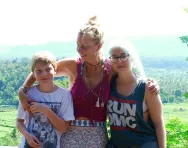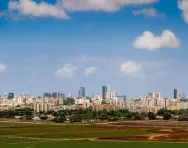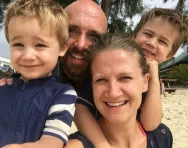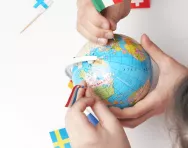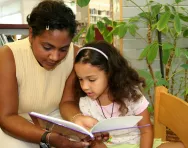Important update from TheSchoolRun
For the past 13 years, TheSchoolRun has been run by a small team of mums working from home, dedicated to providing quality educational resources to primary school parents. Unfortunately, rising supplier costs and falling revenue have made it impossible for us to continue operating, and we’ve had to make the difficult decision to close. The good news: We’ve arranged for another educational provider to take over many of our resources. These will be hosted on a new portal, where the content will be updated and expanded to support your child’s learning.
What this means for subscribers:
- Your subscription is still active, and for now, you can keep using the website as normal — just log in with your usual details to access all our articles and resources*.
- In a few months, all resources will move to the new portal. You’ll continue to have access there until your subscription ends. We’ll send you full details nearer the time.
- As a thank you for your support, we’ll also be sending you 16 primary school eBooks (worth £108.84) to download and keep.
A few changes to be aware of:
- The Learning Journey weekly email has ended, but your child’s plan will still be updated on your dashboard each Monday. Just log in to see the recommended worksheets.
- The 11+ weekly emails have now ended. We sent you all the remaining emails in the series at the end of March — please check your inbox (and spam folder) if you haven’t seen them. You can also follow the full programme here: 11+ Learning Journey.
If you have any questions, please contact us at [email protected]. Thank you for being part of our journey it’s been a privilege to support your family’s learning.
*If you need to reset your password, it will still work as usual. Please check your spam folder if the reset email doesn’t appear in your inbox.
Primary school around the world: Sweden
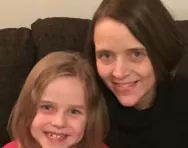
Helen Davidson lives in Västerås, Sweden. Her daughter Louise, eight, is in Year 2. She’s also mum to Tom, 15, Ben, 13, Ross, four, and Ellen, five months.
One of the biggest differences between education in the UK and in Sweden is that here, children don’t start school until the August of the year they turn seven. That means some children are seven and a half before they have any formal education. They’re offered a pre-school year at their school the year before they start, but it’s not compulsory. If they do go, they do three hours a day, to get to know each other and get used to the school environment. They also do some introductory work on letters and numbers.
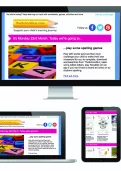
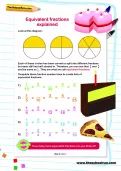
Start a unique learning programme!
- Weekly programme for each school year
- Worksheets sent direct to your inbox
- Keeps your child's learning on track
Here, children in a school’s catchment area have to be offered a place if they want one, so class sizes vary. Louise’s class has 24 pupils, and that’s fairly typical, although anything from 20 to 30 is normal. I don’t believe there’s an upper limit, but if numbers go much higher than 30, the school will usually create an extra class. Most years at Louise’s school have two parallel classes, but Year 4 and Year 6 have three classes.
Schools are structured differently here. Traditionally, they were split into lower, middle and upper schools, but nowadays, most schools encompass at least two of the stages, and some – like Louise’s – go all the way through from Year 1 to Year 9. Louise will probably move schools when she’s 10, and go to the same Year 4 to Year 9 school as her brothers.
Year 9 – when children are aged 15 and 16 – is the last year of compulsory education, but almost all pupils then do three years of college.
'The school day here is short'
School is pretty relaxed over here. There’s no uniform, and most children dress casually. They call teachers by their forenames, and discipline is quite lax.
The school day is also very short. It varies slightly depending on children’s school year and the day of the week, but Louise does 8.10am to 12.30pm three days a week, and 8.10am to 1.10pm and 8.10am to 1.40pm on the other two days. Almost all children then go to the onsite after-school club, although Louise isn’t allowed to at the moment, as I’m at home on maternity leave.
Kids have nine weeks’ holiday in the summer, two weeks at Christmas, one week at Easter, one week for autumn half-term, and one week for winter break.
Louise goes to a state school, so I don’t pay for her education. Everyone gets school dinners at no additional cost. There’s a different dish each day: usually some sort of meat, fish or chicken with potatoes, pasta or rice, and a salad bar.
'Even Year 1 kids have to shower after PE'
The subjects children are taught here aren’t that different from in England. Obviously, Swedish is taught as the first language, and English is introduced as a second language right from Year 1. Swedish is Louise’s least favourite subject; she’s a keen reader, but finds writing takes too long and she doesn’t always have time to finish. Her favourite subject is maths, as she finds it quite easy and it doesn’t involve much writing!
PE is quite different; they don’t do hockey, netball, rugby or cricket, but they play handball and floorball, and do ice-skating and cross-country skiing in winter. All kids are expected to shower after PE, even in Year 1!
Homework is minimal; Louise gets five to 10 minutes of maths between two and four times a week, and has to read one short chapter of her book each week. And although there are national tests in Swedish and maths near the end of Year 3, they don’t really talk about passing or failing; the idea is to highlight the children who need extra support.
'Children don't get challenged enough'
Unlike in the UK, there aren’t many opportunities for parents to get involved in school life. There are no school plays, Nativity plays or fetes. There’s a sports day each term, but parents aren’t invited and it’s not very competitive; it’s just an opportunity for pupils to be active.
The biggest annual celebration is Lucia (St Lucy) in December. The children who want to be involved dress in white gowns and sing traditional songs, and parents are often invited to watch, with coffee and saffron buns served afterwards. There’s also usually a special ceremony at the end of the Christmas and summer terms, where the whole school gathers for speeches and singing.
Extra-curricular activities are separate from school. There are lots of sports clubs, music lessons and Scout groups, but they’re run independently. Louise does football, golf, dance and Scouts.
Overall, schools here are pretty laid-back and stress-free. It’s nice in some ways, but also a waste of the natural enthusiasm most kids have for learning at that age. It’s too slow for a lot of children, especially considering they’re already two years older than English children when they start school, and the lack of focus on exams and grades means a lot of kids aren’t challenged enough and get bored.
